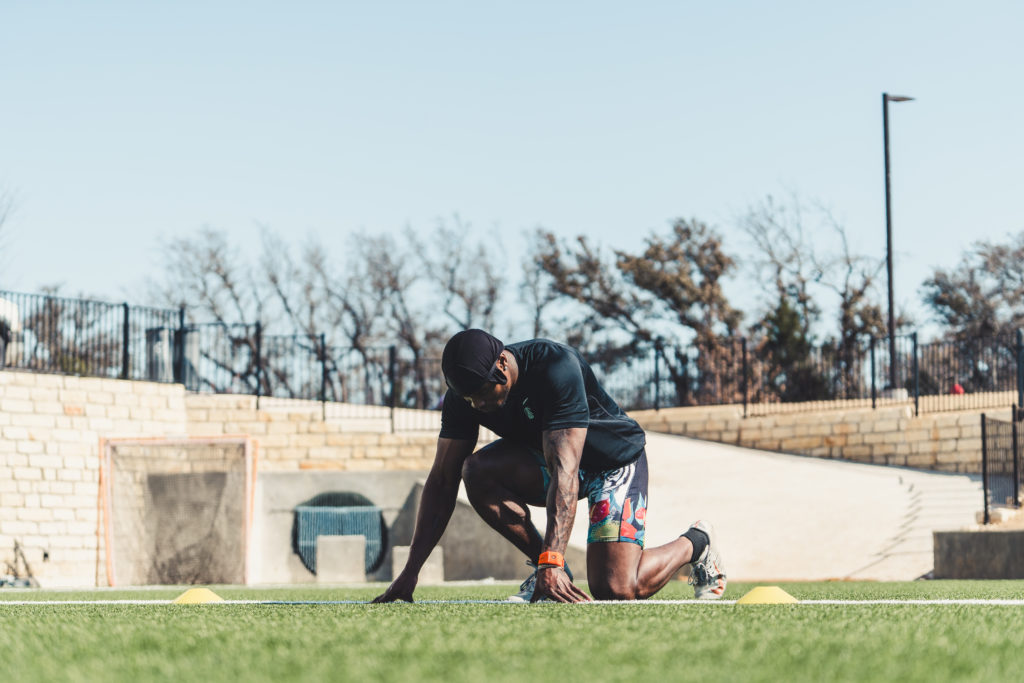
Sports injuries can cause athletes to experience physiological (and psychological) trauma, resulting in feelings of physical and mental debilitation. The time and recovery process can be frustrating and requires physical endurance as well as mental stamina. At Team ROI, our team of specialists believe that it is possible for the comeback to eclipse the setback through the use of an integrated approach to sports medicine and healing.
We combine physical therapy, strength training and conditioning, nutrition, and other complementary therapies to help athletes reach their recovery goals and return to the sports they love playing stronger than before. Using sport testing, we are able to find our clients’ weaknesses and strengths, so we can create a plan for helping them reach peak performance.
What is Return to Sport Testing?
Return to Sport testing is a methodology that simulates game play while allowing our performance experts to assess an athlete’s fitness level and weak points. Functional performance testing provides an objective understanding of the starting place and work to be done, so that we can devise a training plan that takes into account an individual’s current physical challenges and performance level.
Injury Assessment and Intervention
Our methodology for determining an athlete’s readiness to return to sport incorporates objective measurements of physical and psychological performance to minimize the risk of re-injury. Our expert team continuously assesses clients’ tissue quality, joint mobility, and movement function to create an individually tailored plan designed to meet each athlete where they are and get them where they want to be. Return to sport testing is just one piece of the puzzle.
Additionally, our holistic interventional program incorporates a variety of complementary healing modalities designed to promote blood flow, increase joint and muscular mobility, and alleviate pain. Following are just some of the services we offer
- Soft Tissue Mobilization (STM): Soft tissue injuries or strains can affect several types of tissue systems in the body. STM is a type of manual therapy that can relax tense muscles, reduce scar tissue, and strengthen and lengthen connective tissue. In addition to strains and sprains, STM has proven useful for recovering from contusions, tendonitis, bursitis and stress injuries. STM tackles these types of injuries through an integrated approach of physical therapy, strength and conditioning, and other manual recovery services.
- Instrument-Assisted Soft Tissue Mobilization (IASTM)/Scraping: IASTM is a popular treatment for myofascial restriction, a condition which causes pressure on sensitive points in your muscles (trigger points) resulting in pain in the muscle and sometimes in seemingly unrelated parts of your body. IASTM uses specially designed instruments to provide a mobilizing effect on soft tissue (e.g., scar tissue, myofascial adhesion) to decrease pain and improve range of motion (ROM) and function. It works by stimulating connective tissue remodeling through resorption of excessive fibrosis, along with inducing repair and regeneration of collagen secondary to fibroblast recruitment. IASTM can be used to treat a range of conditions in returning athletes to sport.
- Cupping/Vacuum Therapy: Cupping is a type of therapy with origins in traditional Chinese medicine that is said to return the life force or “Qi” to the body by balancing internal systems. Cupping has noticeable benefits for patients, including increased blood flow and reduced pain. Many Olympic and pro athletes have enjoyed the benefits of cupping.
- Dry Needling: Dry needling is a type of therapy that has evolved out of acupuncture. Dry needling provides relief and recovery to muscular pain by stimulating trigger points, or muscles that are irritable. Hard knots can be stimulated via a “twitch” response, therefore alleviating muscular pain and stiffness, allowing for improved flexibility, increased range of motion and decreased pain.
- Joint Mobilizations/Manipulations: This kind of manipulative therapy target joint pain and joint hypomobility. This treatment works to restore physiologic or accessory joint motion with applied pressure to the target joint. Any increases in joint mobility are then reinforced through therapeutic exercises designed to increase flexibility and provide stability in the newly acquired motion. Mobilization or manipulation also works to fire up nerve ending receptors and provide input to the central nervous system.
Our Team of Specialists
Getting athletes back onto the court or field is a team sport. The expertise of our residency-trained physical therapists and masters-level educated strength and conditioning specialists optimize athletic rehabilitation outcomes unique to each individual athlete’s recovery goals.
Our integrated approach includes expert insight from qualified dietitians and massage therapy specialists to promote a full-recovery, wellness and healing. We offer several programs and are able to customize a recovery plan to teams and individuals. We are proud to have achieved successful results with our sponsored collegiate and Olympian sponsored athletes in being able compete at an optimized performance level.
Contact us by phone at (512) 955-5337or send us a message to enroll in one of our programs and start your return to sport recovery today.
